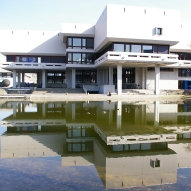Alternative Links zum Volltext:DOI
| Dokumentenart: | Artikel | ||||
|---|---|---|---|---|---|
| Titel eines Journals oder einer Zeitschrift: | Biosensors Bioelectronics | ||||
| Verlag: | Elsevier | ||||
| Band: | 25 | ||||
| Nummer des Zeitschriftenheftes oder des Kapitels: | 5 | ||||
| Seitenbereich: | S. 1221-1224 | ||||
| Datum: | 2009 | ||||
| Institutionen: | Chemie und Pharmazie > Institut für Analytische Chemie, Chemo- und Biosensorik > Bioanalytik und Biosensorik (Prof. Joachim Wegener) | ||||
| Identifikationsnummer: |
| ||||
| Dewey-Dezimal-Klassifikation: | 500 Naturwissenschaften und Mathematik > 540 Chemie | ||||
| Status: | Veröffentlicht | ||||
| Begutachtet: | Ja, diese Version wurde begutachtet | ||||
| An der Universität Regensburg entstanden: | Ja | ||||
| Dokumenten-ID: | 20240 |
Metadaten zuletzt geändert: 29 Sep 2021 07:38
Nur für Besitzer und Autoren: Kontrollseite des Eintrags



 Altmetric
Altmetric Altmetric
Altmetric